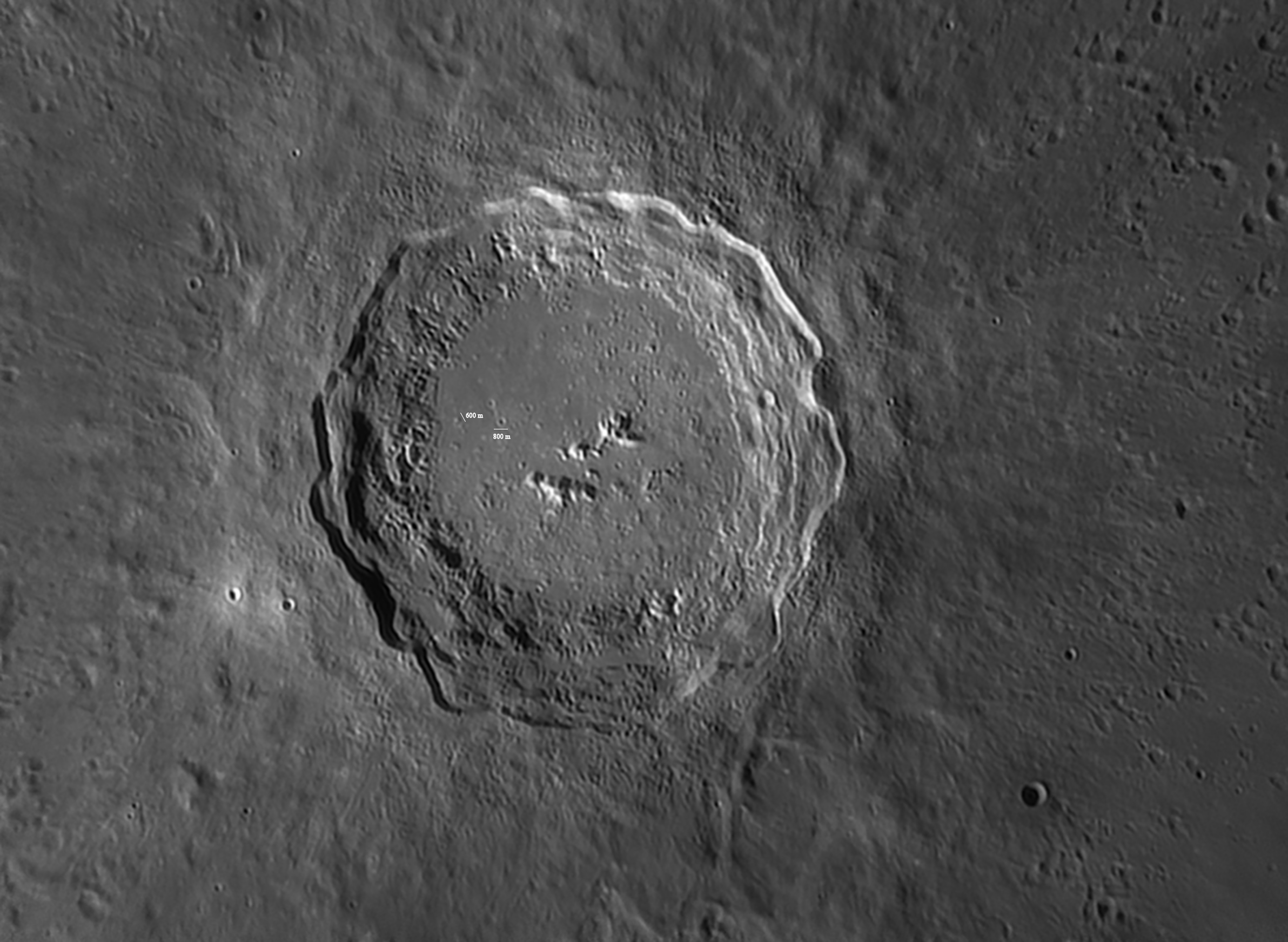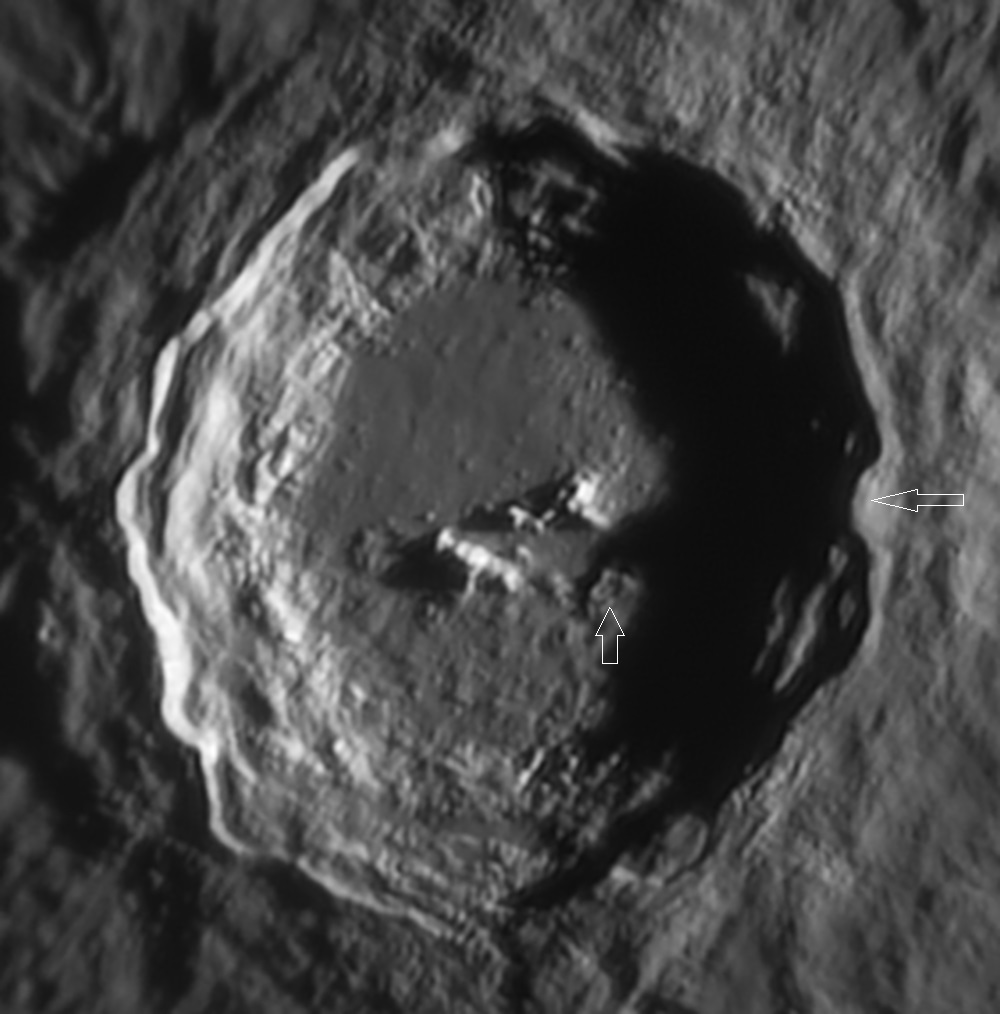Uno dei crateri lunari più importanti, che non ha bisogno di presentazioni. I profondi terrazzamenti, gli alti picchi centrali ed i brillanti ejecta convergono ad indicare un’età giovane, stimata in ca. 1 miliardo di anni. L’iconoclasta Niccolò Copernico fu “punito” dal gesuita G.B. Riccioli (XVII sec.) che lo pose nel Mare delle Tempeste, ma dalla grandiosità del cratere emerge forse la simpatia di Riccioli per il sistema eliocentrico.
(ENG) One of the most prominent lunar craters, which no needs introduction. The deep terraces, the high central peaks and the bright ejecta around converge to indicate a young age, estimated in approx. 1 billion years. The iconoclast Nicolaus Copernicus was “punished” by jesuit G.B. Riccioli (17th century) posing him into Sea of Storms, but from crater’s grandeur perhaps emerges Riccioli’s sympathy for heliocentric system.
Copernico in alta risoluzione
Le collinette od occidente (misurate nella ripresa) sottendono un angolo di circa 0.3″.
(ENG) The shallow mountains on western side (marked on the image) subtend an angle of approx. 0.3″.
L’uncino di Copernico (nome proposto)
La prominenza orientale sulla parete esterna, unita all’ombra proiettata dalle basse collinette sul fondo del cratere (entrambe indicate dalla freccia nell’immagine) generano questo interessante “uncino” che può essere paragonato a quello più famoso, ma controverso, all’interno di Plato. L’ombra ricorda anche un’aquila con le ali aperte (la testa si trova in corrispondenza dell’uncino). Per aiutare a replicare la ripresa, è indicato al minuto l’orario di acquisizione.
Benché Copernico sia un cratere molto osservato, questo effetto d’ombra non mi risulta essere menzionato in letteratura.
(ENG) The eastern prominence on the external rim, combined with the shadow cast by the shallow hills on the floor (both indicated by arrow in the image) generate this interesting “hook” which can be compared with the more famous one, but controbersial, in Plato. The shadow could also resemble an eagle with open wings (the head being on hook).In order to help in finding the same configuration, the exact acquisition timing is reported.
Although Copernicus is a widely observed crater, this shadow effect does not appear to be mentioned in the literature.

